Somerset Gems – Ancient and New Age
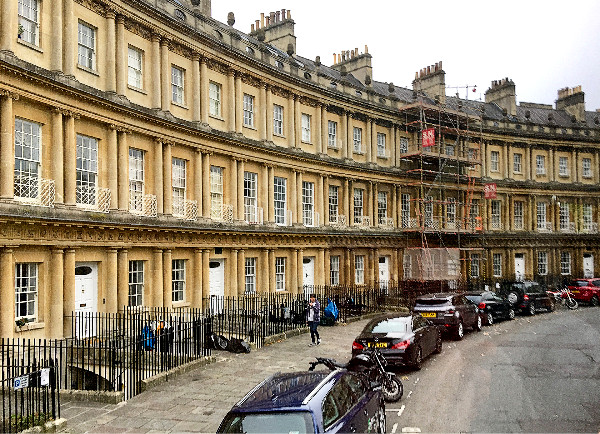
The iconic Royal Crescent is one of the most well recognised scenes in Bath. Its Georgian architecture appears straight out of a Jane Austen novel. (Unfortunately wherever you go in Europe and the UK, the age of the interesting old buildings means scaffoldings get in the way of a perfect photo!) Our coach tour dropped us off just near the approach to the town centre as the coach suddenly had mechanical problems. No matter, it was a downhill walk, and gave us plenty of opportunity to admire the honey-coloured sandstone buildings along the way. The Crescent comprises 30 terraced houses built between 1767 and 1774, part of a ring of townhouses, known as The Circus, sweeping around a circular lawn.
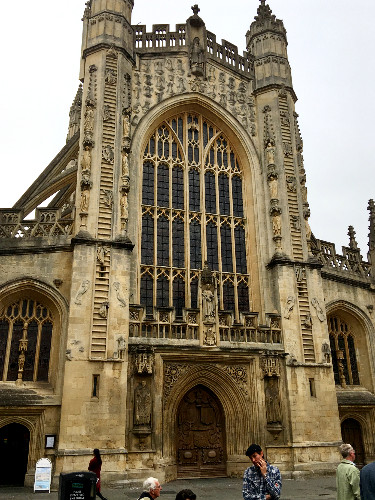
Towering above the city is Bath Abbey, a Church of England parish church and former Benedictine monastery. Its current design dates from the 16th century, although it was founded in the 7th century and had major restoration in the 1860s. The west front of the church displays an unusual feature – sculptures of angels climbing to heaven on two stone ladders, representing Jacob’s Ladder. Inside, it houses incredible stained-glass windows, intricate memorial plaques on walls and floors, and fan vault ceilings.
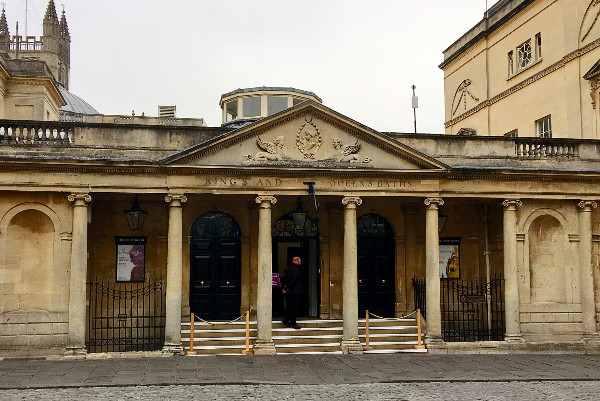
Just metres away, the attraction that Bath is most renowned for, is the Roman Baths. The whole city of Bath is a UNESCO World Heritage Site, deemed historically and culturally important largely due to its Roman roots and magnificent eighteenth-century architecture. The Baths showcases one of the best-preserved Roman remains in the world.

Constructed in around 70AD, the Roman Baths receives 1,170,000 litres of steaming water from a natural spring, reaching 46°C, every single day. The Great Bath is 1.6 m deep and is lined with sheets of lead. The site also houses an interactive museum filled with many treasures and visual displays that document life in Roman times.

The Roman Baths complex extends under the modern ground level, about 20 m beneath adjacent streets and squares. So the view from the terrace around the Great Bath is only a small component of the site. The sculptures on the terrace were added in the late 19th century after the site was first discovered and explored.
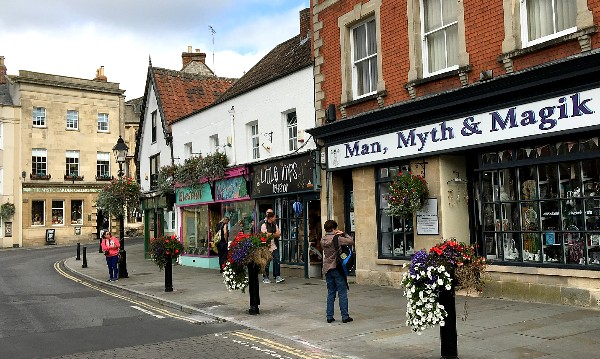
While in Somerset, who could resist visiting the town of Glastonbury, famous for its music festivals. But it is also notable for myths and legends often related to Glastonbury Tor, a conical hill 158m high, concerning Joseph of Arimathea, the Holy Grail and King Arthur. Most of these myths have no real basis in fact, but nevertheless it has become a New Age centre perpetuating the fondly held beliefs. Pilgrimages are now made to the Tor as a site of feminist power and healing, particularly due to the presence of a natural spring well at the Tor’s base.

The town’s main streets are decorated with brightly coloured shops selling various potions, lotions and spiritualist trinkets. There is a very alternative vibe to the town, yet it still holds on to its ancient past.
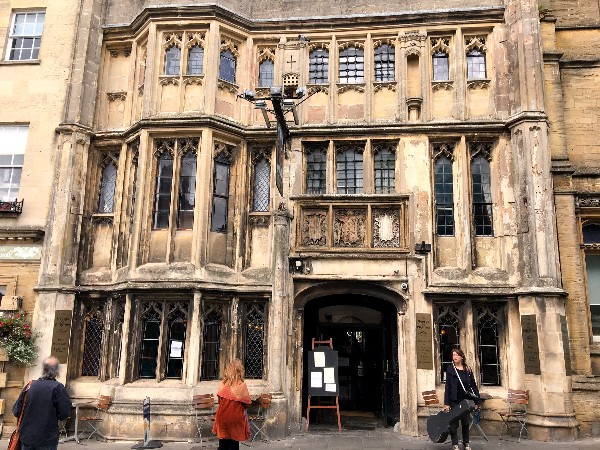
The George and Pilgrims Hotel in the High Street is one of the well preserved buildings from the late 15th century, built and named originally The Pilgrim’s Inn to accommodate visitors to the Glastonbury Abbey. And in keeping with the spirit of the town, it is believed to be haunted !

The Abbey was one of the richest and most powerful monasteries in England, due no doubt to the medieval Christian legend that claimed that the abbey was founded by Joseph of Arimathea in the 1st century. However investigations have established the Abbey was begun in the 7th century. It is now in ruins, having been destroyed at the time of the Dissolution of the Monasteries and its stones were repurposed in local buildings. However the Abbot’s Kitchen, built in the 14th century, is still relatively intact.
As it happens with coach tours, as soon as we finished our hastily eaten lunch we were spirited off to Devon and the Dartmoor National Park, to end a full day at Plymouth.































